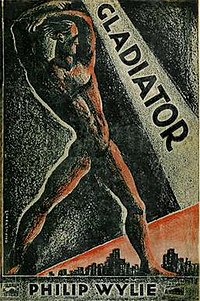
Lois Lane is a fictional character appearing in American comic books published by DC Comics. Created by writer Jerry Siegel and artist Joe Shuster, she first appeared in Action Comics #1. Lois is an award-winning journalist for the Metropolis newspaper the Daily Planet and the primary love interest of the superhero Superman and his alter ego, Clark Kent. In DC continuity, she is also his wife and the mother of their son, Jon Kent, the newest Superboy in the DC Universe.

Superman is a superhero who appears in American comic books published by DC Comics. The character was created by writer Jerry Siegel and artist Joe Shuster, and debuted in the comic book Action Comics #1. Superman has been adapted to a number of other media, which includes radio serials, novels, films, television shows, theater, and video games.
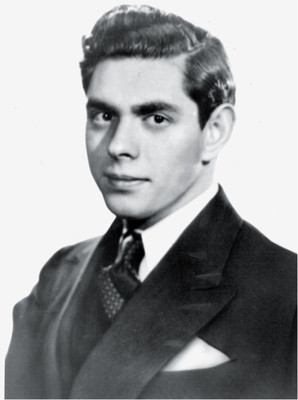
Joseph Shuster, was a Canadian-American comic book artist best known for co-creating the DC Comics character Superman, with Jerry Siegel, in Action Comics #1.
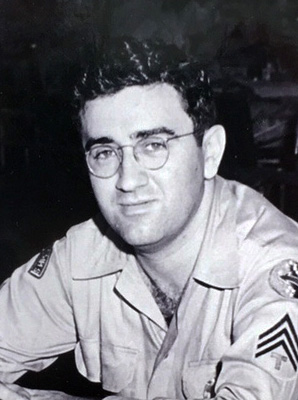
Jerome Siegel was an American comic book writer. He is the co-creator of Superman, in collaboration with his friend Joe Shuster, published by DC Comics. They also created Doctor Occult, who was later featured in The Books of Magic. Siegel and Shuster were inducted into the comic book industry's Will Eisner Comic Book Hall of Fame in 1992 and the Jack Kirby Hall of Fame in 1993. With Bernard Baily, Siegel also co-created the long-running DC character The Spectre. Siegel created ten of the earliest members of the Legion of Super-Heroes, one of DC's most popular team books, which is set in the 30th Century. Siegel also used pseudonyms including Joe Carter and Jerry Ess.

Lucas "Luke" Cage, born Carl Lucas and also known as Power Man, is a character appearing in American comic books published by Marvel Comics. Created by Archie Goodwin, George Tuska, Roy Thomas, and John Romita Sr., the character first appeared in Luke Cage, Hero for Hire #1. He is one of the earliest black superheroes to be featured as the protagonist and title character of a Marvel comic book.
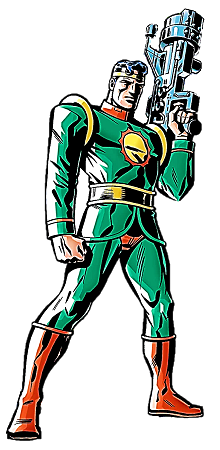
Jor-El, originally known as Jor-L, is a character appearing in American comic books published by DC Comics. Created by writer Jerry Siegel and artist Joe Shuster, Jor-El first appeared in the Superman newspaper comic strip in 1939.
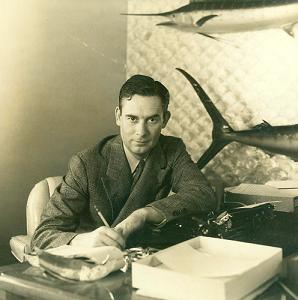
Philip Gordon Wylie was an American writer of works ranging from pulp science fiction, mysteries, social diatribes and satire to ecology and the threat of nuclear holocaust.

The Young All-Stars are a team of fictional DC Comics superheroes. They were created by Roy Thomas, Dann Thomas, and Michael Bair, and introduced in Young All-Stars #1, dated June 1987. The team members Tsunami, Neptune Perkins, and Dan the Dyna-Mite were all introduced in previously published DC Comics stories. The team members Iron Munro, Flying Fox, and Fury were created for the series and intended to be analogs of the Golden Age versions of Superman, Batman, and Wonder Woman respectively.
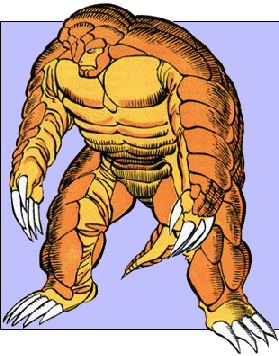
Armadillo is a supervillain appearing in American comic books published by Marvel Comics.
The American Crusader is a superhero who originally appeared in Thrilling Comics #19. He appeared in almost every issue until #41.
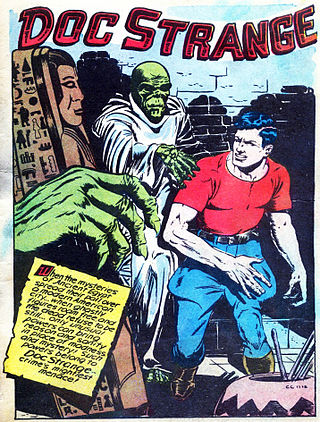
Doc Strange is a Golden Age comic book superhero who originally appeared in Thrilling Comics #1 in February 1940. The character continued in Thrilling Comics until issue #64. He also appeared in America's Best Comics #1-23 and 27.
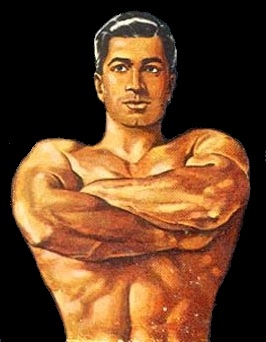
Hugo Danner is a fictional character and the protagonist of Philip Wylie's 1930 novel Gladiator. Born in the late 19th century with superhuman abilities via prenatal chemical experimentation, Danner tries to use his powers for good, making him a precursor of the superhero. However, Danner grows disillusioned with his inability to find a permanent outlet for his great strength, and dies frustrated.
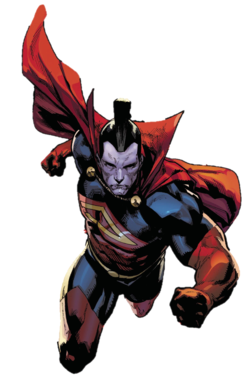
Gladiator (Kallark) is a fictional character appearing in American comic books published by Marvel Comics. He first appeared in The X-Men #107 and was created by writer Chris Claremont and artist Dave Cockrum. The character is a Strontian, and like others of his race has the capacity for great strength and various superpowers, but can only use them when he is completely devoted to a purpose; his abilities vary in accordance with his level of confidence. He was born on Strontia, which is part of the Shi'ar Empire and he is the leader of their Imperial Guard. He was also a member of the Annihilators, Dark Guardians, and Guardians of the Galaxy.

Iron Munro is a superhero character appearing in American comic books published by DC Comics. Roy Thomas created the character in 1987 for Young All-Stars. He largely served to replace Superman in stories set during World War II after the Crisis on Infinite Earths storyline eliminated continuities in which Superman was active in this period.

JLA: Pain of the Gods is a trade paperback which compiles issues #101-106 of the American comic book JLA, published by DC Comics. This story arc was written by Chuck Austen and penciled by Ron Garney.

Piledriver is a supervillain appearing in American comic books published by Marvel Comics. He is a member of the Wrecker's Wrecking Crew.

The origin of Superman and his superhuman powers have been a central narrative for Superman since his inception, with the story of the destruction of his home planet, his arrival on Earth and emergence as a superhero evolving from Jerry Siegel's original story into a broad narrative archetype over the course of Superman's literary history and as the character's scope continues to expand across comics, radio, television and film.

Superhero fiction is a subgenre of science fiction examining the adventures, personalities and ethics of costumed crime fighters known as superheroes, who often possess superhuman powers and battle similarly powered criminals known as supervillains. The genre primarily falls between hard fantasy and soft science fiction in the spectrum of scientific realism. It is most commonly associated with American comic books, though it has expanded into other media through adaptations and original works.

The Gladiator is a 1938 American comedy and fantasy film starring Joe E. Brown, Dickie Moore and June Travis. The movie is an adaptation of Philip Gordon Wylie's 1930 novel Gladiator, which is often credited with having influenced the creation of Superman.

Olga Mesmer is a superpowered fictional character in a pulp magazine's comic strip published from 1937 to 1938. Like the newspaper comic-strip character Popeye (1929) and novelist Philip Wylie's protagonist Hugo Danner (1930), she is among the precursors of the archetypal comic-book superhero, Superman.
